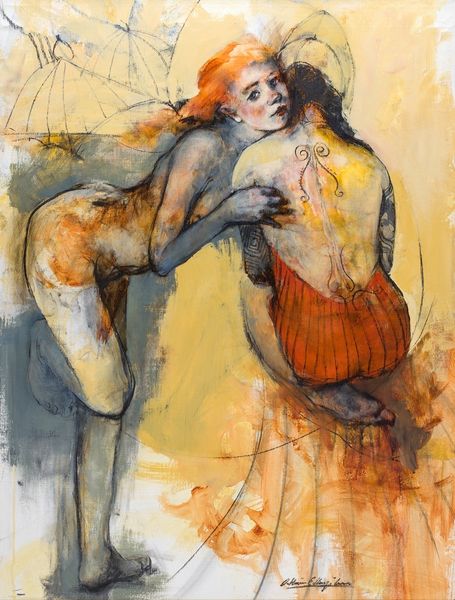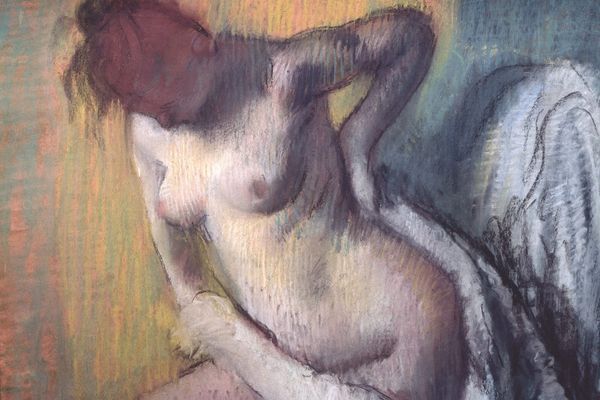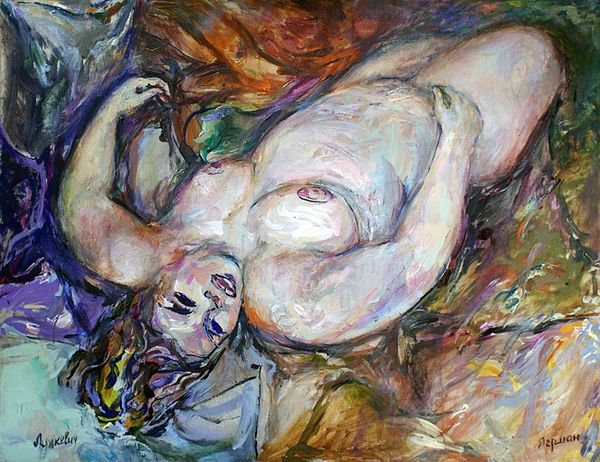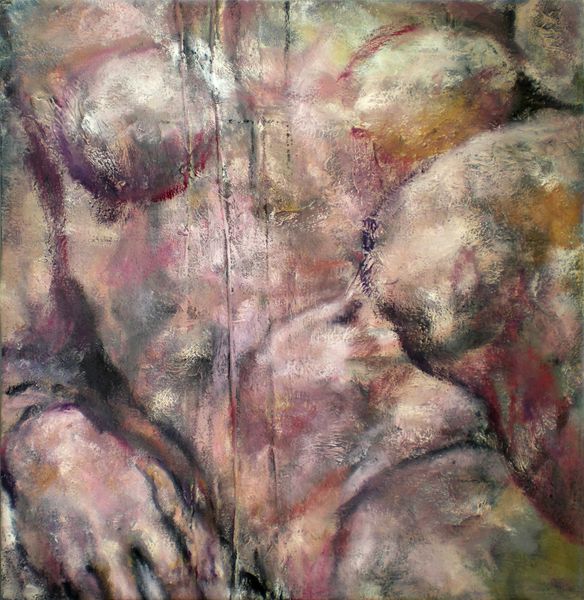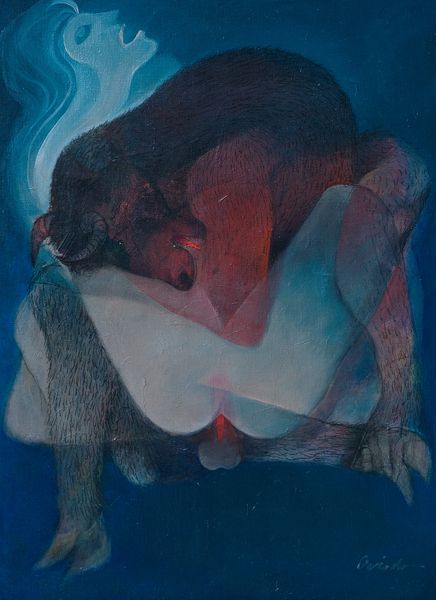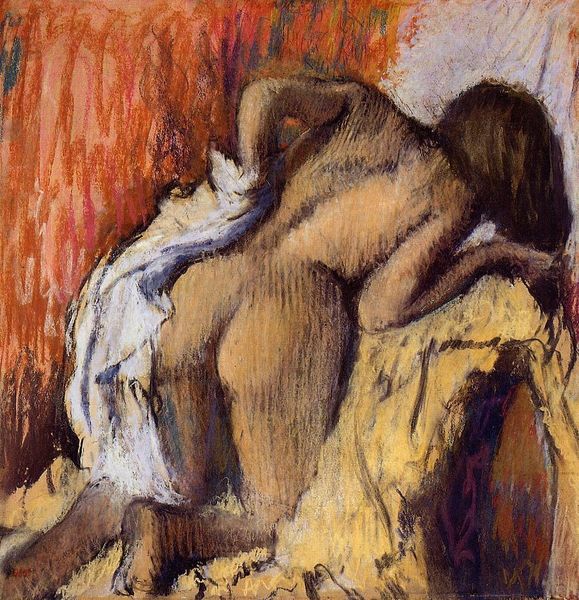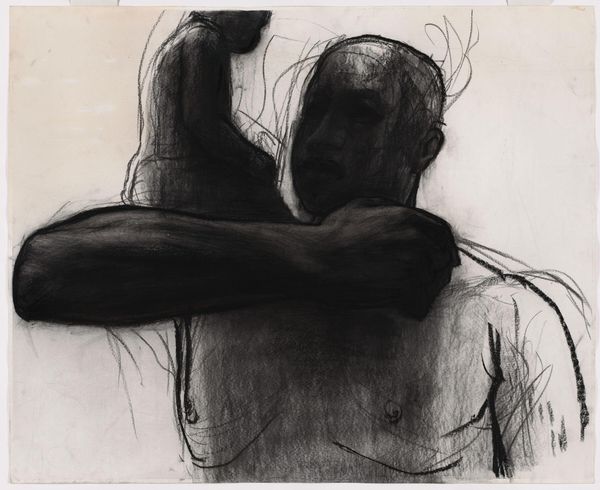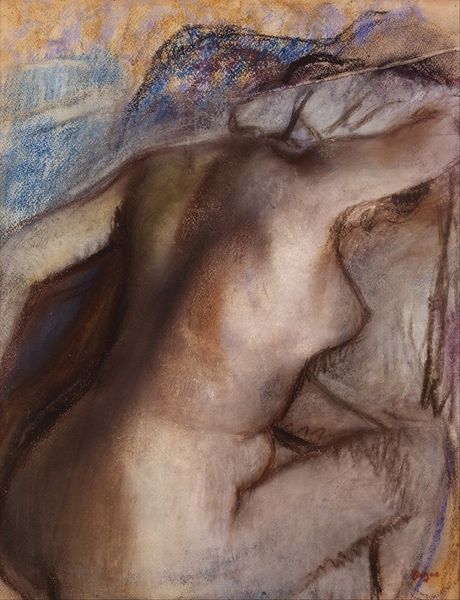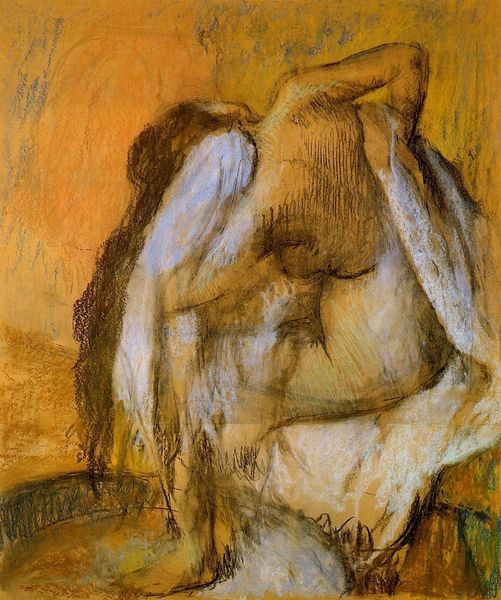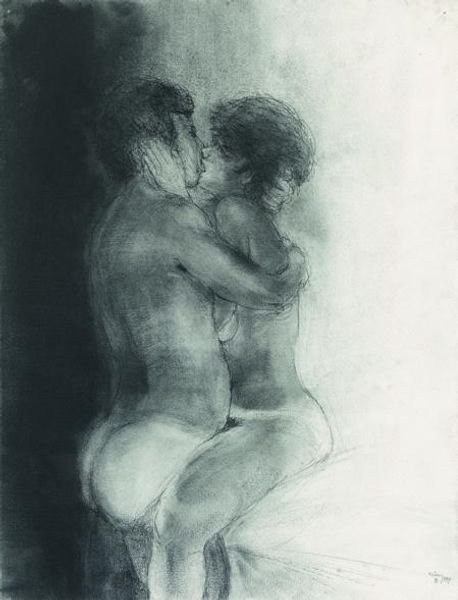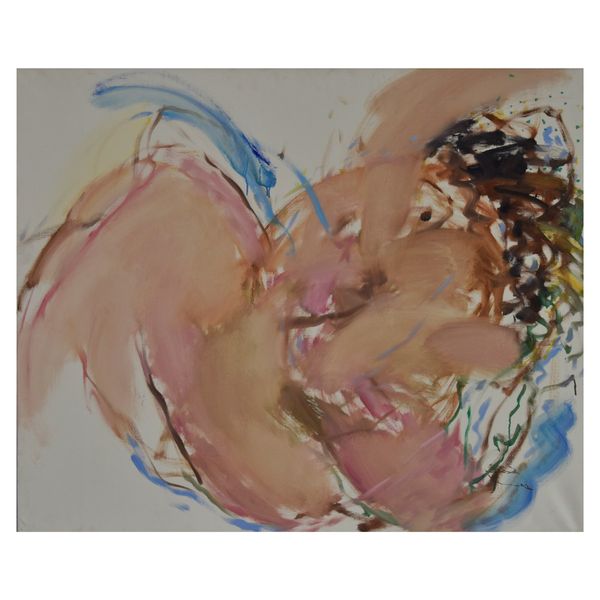
oil-paint, impasto
#
portrait
#
organic
#
narrative-art
#
oil-paint
#
figuration
#
oil painting
#
impasto
#
romanticism
#
genre-painting
#
nude
Copyright: Modern Artists: Artvee
Curator: Let’s consider this artwork titled, "Sabrina," created using oil paint, featuring impasto techniques. What are your initial thoughts? Editor: It’s a fascinating composition. The orangutan's red-orange fur immediately draws the eye, contrasting with the muted tones of the figure and background. The impasto gives it a tactile quality, like I could almost feel the fur. Curator: Precisely. Now, think about how it resonates within historical contexts of representing women and animals. This piece might evoke conversations about the legacy of female nudes in art history, and the politics inherent to that genre. There is also an aspect of colonialism present in depicting wildlife with a sense of almost ownership or entitlement, which carries through the artist's contemporary work. Editor: Interesting point about ownership. The visible brushstrokes suggest a direct, almost raw, encounter between the artist, the materials, and the subject. This contrasts with idealized, finished nudes we usually see. And you’re right, the relationship with wildlife through that colonial lens must have deeply informed their approach. It makes me question the actual labor that went into creating the piece and capturing its energy and the animal. Curator: Right. The use of figuration alongside these considerations begs to ask: who benefits from art-making? Where and how is Sabrina placed in our social matrix? Do women and nature exist outside the social realm, or has history denied both an explicit inclusion within the sphere of society and public life? Editor: It seems like a commentary about labor and social status, given how materials like oil paint used this way also create hierarchy when we think about artistic practices. What is usually dismissed as craft takes center stage. Curator: Agreed. Viewing it through this context highlights a re-evaluation. Thinking about the artistic choices around materials, representation, and, in essence, who or what gains visibility or continues unseen by the public’s eye leaves one with a greater understanding of intersectional dynamics and of the artist's point of view as a socially conscious author. Editor: Definitely. Now, I leave seeing a challenge and consideration to not only what but to also who, what, and why has it been produced. Curator: A powerful note to end on. It provokes us to confront deeper questions.
Comments
No comments
Be the first to comment and join the conversation on the ultimate creative platform.
